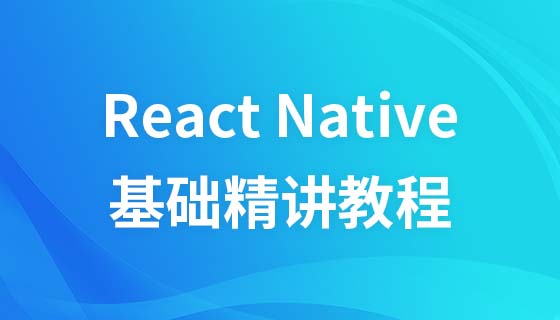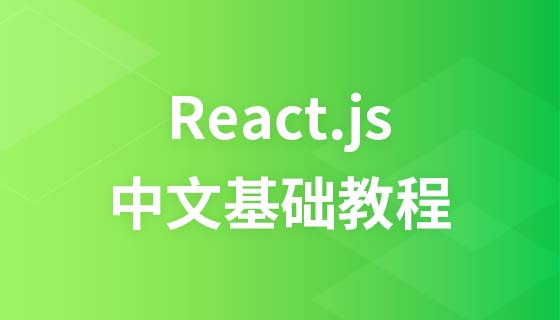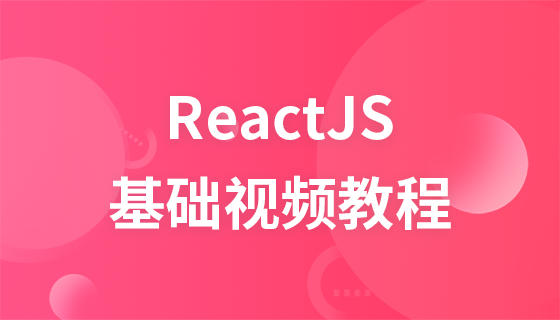這篇文章主要講述的就是關於react該如何學習的介紹,現在讓我們一起來看文章的正文內容吧
React根本上其實就是一個JavaScript函式庫。
它體現了前後分離的思想,將部分組裝頁面的工作轉交給瀏覽器來完成;不像JSP文件,頁面的佈局和填入數據是在伺服器完成後發送給瀏覽器的的。
這樣做的好處自然有很多:首先,React將DOM&JavaScript封裝成模組(元件),這些元件的可重複使用性很強,不僅如此,元件也可以讓測試和關注分離變得簡單。其次,當資料變化的時候,React能夠自動更新使用者介面,並且僅更新需要更新的部分。
這個函數的功能就是提供一個模組,它就像是樂高玩具的一塊積木,用來組裝頁面。
簡單範例:(先給的是html程式碼,後面給的是JSX程式碼。JSX就是JavaScript XML的意思)
<p id="container" class="firstContainer">
<p>replaced</p>
</p>/*************************************************/ReactDOM.render(
<p>Hello, world!</p>,
document.getElementsByClassName('firstContainer')[0]
);可以看到class 為firstContainer 的p的內容被替換掉了,替換成了我們在render中寫入的程式碼:hello world!
另外document.getElementsByClassName('firstContainer')[0]可以替換成任何原生的JavaScript獲取**單獨某一個(一定是一個Node,因此如果你使用document.getElementsByClassName這樣的方法必須要加上[n])**DOM元素的方法:document.getElementById或document.getElementsByTagName等都可以。
更複雜一點的例子,我們可以來將這裡的<p>Hello, world!</p> 擴充。
<p id="container" class="firstContainer">
<p>replaced</p>
</p>/*************************************************/var name = "Emily";
ReactDOM.render(
<p>
{
(function(){ return <p>Hello, {name}!</p>
})()
}
</p>,
document.getElementById('container')
);我們可以看到JSX語法的神奇之處了,在程式碼中,JS和DOM可以說是混雜在一起的。而JSX 的基本語法規則:遇到 HTML 標籤(以 < 開頭),就用 HTML 規則解析;遇到程式碼區塊(以 { 開頭),就用 JavaScript 規則解析。
這個函數允許我們自己定義需要的元件,定義好的元件可以作為像p這樣的標籤一樣,直接應用於render函數中。
一個簡單的栗子:
<p id="container" class="firstContainer">
<p>replaced</p>
</p>/*************************************************/var HelloWorldBox = React.createClass({
render: function() { return (
<p className="helloWorldBox">
Hello, world! I am a helloWorldBox.
</p>
);
}
});
ReactDOM.render(
<HelloWorldBox />,
document.getElementById('container')
);在這個栗子裡,HelloWorldBox就是一個最簡單的元件。
關於這個元件,我們還可以獲得更多資訊。例如,使用props
(實例來自React官網)
<p id="container" class="firstContainer">
<p>replaced</p>
</p>/*************************************************/var Comment = React.createClass({
render: function() { return (
<p className="comment">
<h2 className="commentAuthor">
{this.props.author}
</h2>
{this.props.children}
</p>
);
}
});var CommentList = React.createClass({
render: function() { return (
<p className="commentList">
<Comment author="Pete Hunt">This is one comment</Comment>
<Comment author="Jordan Walke">This is *another* comment</Comment>
</p>
);
}
});
ReactDOM.render(
<CommentList />,
document.getElementById('container')
);在這個栗子中,我們使用React.createClass方法建立了兩個元件,我們可以看到,在元件CommentList中,嵌套了Comment:也就是說,CommentList是由多個Comment組成的。我們在CommentList中為Comment定義了一個屬性:author。那麼,在Comment元件中,就可以透過{this.props.author}讀到這個屬性,而透過{this.props.children},則可以讀到這個元件的子節點。
存取外部數據:
<p id="container" class="firstContainer">
<p>replaced</p>
</p>/*************************************************/var Comment = React.createClass({
render: function() { return (
<p className="comment">
<h2 className="commentAuthor">
{this.props.author}
</h2>
{this.props.children}
</p>
);
}
});var names = ['Alice', 'Emily', 'Kate'];
ReactDOM.render(
<p>
{
names.map(function (name) { return <Comment author={name}>is an author~</Comment>
})
}
</p>,
document.getElementById('container')
);在這裡,數組names是外部數據,我們透過建立元件,將這些數據嵌入了網頁的DOM中。
每個元件都有一個屬性:state,開發者可以透過呼叫this.setState()來改變元件的狀態。當狀態更新之後,元件就會重新渲染自己。 state和props都是一個元件的特性,但是不同的是,props是不變的,但是state是可以改變的。
getInitialState()可以設定元件的初始化狀態,而這個函數在元件的生命週期中只執行一次。
更新狀態:
註:componentDidMount函數是元件的生命週期函數,它是一個在元件被渲染的時候React自動呼叫的方法,後面會詳細講到。
var CommentBox = React.createClass({
getInitialState: function() {
return {data: []};
},
componentDidMount: function() {
$.ajax({
url: this.props.url,
dataType: 'json',
success: function(data) {
this.setState({data: data});
}.bind(this),
error: function(xhr, status, err) {
console.error(this.props.url, status, err.toString());
}.bind(this)
});
},
render: function() {
return (
<p className="commentBox">
<h1>Comments</h1>
<CommentList data={this.state.data} />
</p>
);
}
});這個栗子中,我們透過ajax取得數據,並透過函數this.setState將取得的數據設定為this.state.data。然後,在CommentList中,設定data={this.state.data},就可以將從伺服器取得的資料顯示出來。 (想看更多就到PHP中文網React參考手冊欄位學習)
元件的生命週期分為以下三種:
Mounting:已插入真實DOM
#Updating:正在重新渲染
componentWillMount()componentDidMount()componentWillUpdate(object nextProps, object nextState)componentDidUpdate(object prevProps, object prevState)componentWillUnmount()
componentWillReceiveProps(object nextProps):已加载组件收到新的参数时调用shouldComponentUpdate(object nextProps, object nextState):组件判断是否重新渲染时调用
var Hello = React.createClass({
getInitialState: function () {
return {
opacity: 1.0
};
},
componentDidMount: function () {
this.timer = setInterval(function () {
var opacity = this.state.opacity;
opacity -= .05; if (opacity < 0.1) {
opacity = 1.0;
} this.setState({
opacity: opacity
});
}.bind(this), 100);
},
render: function () {
return (
<p style={{opacity: this.state.opacity}}>
Hello {this.props.name}
</p>
);
}
});
ReactDOM.render(
<Hello name="world"/>,
document.body
);componentDidUpdate:function(){
console.log("did update");
}React根本上其實就是一個JavaScript函式庫。
它體現了前後分離的思想,將部分組裝頁面的工作轉交給瀏覽器來完成;不像JSP文件,頁面的佈局和填入數據是在伺服器完成後發送給瀏覽器的的。
這樣做的好處自然有很多:首先,React將DOM&JavaScript封裝成模組(元件),這些元件的可重複使用性很強,不僅如此,元件也可以讓測試和關注分離變得簡單。其次,當資料變化的時候,React能夠自動更新使用者介面,並且僅更新需要更新的部分。
這篇文章到這就結束了(想看更多就到PHP中文網React使用手冊欄位中學習),有問題的可以在下方留言提問。
以上是react的函數有哪些? react函數的詳細解析(附實例)的詳細內容。更多資訊請關注PHP中文網其他相關文章!




